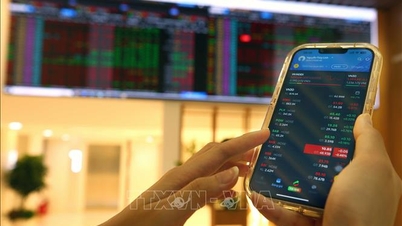
Earthquake on the night of October 10: exposing structural vulnerabilities and lack of control
The night of October 10 to the early morning of October 11 will go down in global financial history, not just as a normal correction, but as a "largest liquidation event" of the cryptocurrency market.
The shockwave was sparked by a political statement: US President Donald Trump abruptly announced that he would impose a 100% tariff on technology imports from China. While the news initially triggered a sell-off in traditional risk markets like tech stocks (the Nasdaq and S&P 500 suffered their biggest drops in six months), it was the cryptocurrency market that suffered the most in scale and speed.
According to CoinGlass statistics and reports cited by Reuters, the total value of positions wiped out in less than 24 hours exceeded $19 billion. This figure is estimated by cryptocurrency analysts to be 9 times larger than the collapse in February 2025 and 19 times larger than the collapse in March 2020 or the bankruptcy of the FTX exchange in November 2022. This is a staggering number, highlighting the fragile nature of the digital asset market.
Along with the value wiped out, about 1.6 million investor accounts worldwide had their positions completely liquidated, bringing their balances to zero. The majority of this, about $16.7 billion, was liquidation of leveraged long (buy) orders.
Bitcoin (BTC) slid from a peak of nearly $122,500 to a low of $104,782.88, wiping out $5.34 billion in long positions. Ethereum (ETH) also fell 12.2% to a low of $3,436.29. Even smaller altcoins like Dogecoin, HYPE, and AVAX saw declines of between 54% and 70% at their session lows, showing that the devastation was not felt in any segment.
Leverage and the "liquidation chain reaction"
While the macro shock was the trigger, the key factor that amplified the disaster to record proportions was the excessive use of financial leverage. In a 24/7, highly volatile market like crypto, borrowing on margin to amplify profits also means amplifying risks exponentially.
"The events of October 10 are a prime example of how leverage can amplify short-term volatility. As prices began to fall, a series of margin calls and forced liquidations spread across exchanges," said Samir Kerbage, CIO at crypto asset management firm Hashdex. He noted that when leveraged positions were closed en masse (margin calls), they were forced to sell assets to repay debts, creating a domino effect of forced selling, causing the market to fall faster than any investor could react.

From a business and risk management perspective, the event exposed flaws in the market structure. Derivatives exchanges such as Hyperliquid, which recorded liquidations of approximately $10.3 billion in positions, faced questions about whether their systems were capable of managing the risk of thin market liquidity during limited trading hours, especially at night in the US. According to some analyses (cited in the media), even large exchanges such as Binance experienced technical problems and market depth plummeted during the peak of volatility. This raised major questions about the technical stability of cryptocurrency trading platforms.
Revival in Caution: Long-Term Outlook and Investor Defense Mechanisms
After the earthquake, the cryptocurrency market has shown impressive resilience. At the beginning of the week, the price of Bitcoin and major currencies bounced back strongly, after President Trump and Vice President JD Vance sent a conciliatory signal, wanting to reduce trade tensions with China.
In addition to the macro leverage factor, the historic crash exposed technical flaws in the trading system. The emerging derivatives exchange Hyperliquid alone recorded liquidations of about $10.3 billion in positions, becoming the center of attention. This figure raised controversy about the sustainability of automatic liquidation mechanisms when market liquidity is thin.
Notably, the sell-off also caused serious problems for some stablecoins. Ethena USDe, the world's third-largest stablecoin, briefly lost its peg to the USD, causing investors to panic even more about the safety of its collateral assets.
According to data from CoinMarketCap, the total global cryptocurrency market capitalization increased by 4.37%, with Bitcoin recovering to $115,000. Ethereum also recorded a strong increase of more than 8%. This recovery coincided with a positive signal from the market structure: Leverage ratios on crypto derivatives exchanges fell to their lowest level since the 2022 crash. The CoinDCX research team said this is a sign that opens the door for a healthier and more sustainable recovery period.
Defensive strategy reigns supreme
Although prices have recovered, the general sentiment among global investors is no longer euphoric but instead cautious and "defensive". This sentiment is clearly reflected in the options market.
Sean Dawson, head of research at crypto options trading platform Derive.xyz (Reuters), said volatility has spiked and many investors are fearful of further price declines. Data from Derive.xyz shows that traders have been aggressively buying put options on Bitcoin and Ethereum, especially those with strike prices of $115,000 and $95,000 expiring at the end of October. This suggests that investors are actively hedging, buying "insurance" for their portfolios against potential shocks.
Richard Galvin, co-founder of hedge fund DACM, warned that “political risks” and unexpected events remain high in the final months of 2025. Vikram Subburaj, CEO of exchange Giottus.com, gave a technical comment: “If Bitcoin holds above $117,000, the possibility of a new uptrend is entirely possible.” However, this growth prospect comes with the condition that the market must be more stable in terms of macro and investors must maintain low leverage.
Lessons for business and individual investors
From a business perspective, traditional financial firms and institutions have seen the October 10 event as a clear demonstration of the close connection between the cryptocurrency market and global macroeconomic factors. This event has motivated large institutions to demand a clearer regulatory framework and more rigorous risk management mechanisms for cryptocurrency derivatives trading products. Large investment banks, which are waiting to inject capital into the market through Bitcoin ETFs, will be more cautious in pricing risks before making long-term commitments.
For individual investors, the crash is a harsh reminder of the importance of risk management. The collapse of more than 1.6 million accounts has demonstrated that high leveraged profits can be wiped out in minutes when markets are driven by large inflows and macro shocks. Avoiding excessive leverage, carefully allocating assets, and always being ready for market reversals are vital strategies in a market as young and volatile as cryptocurrency.
The recent record crash has not changed the long-term outlook for blockchain technology and digital assets, as fundamentals such as ETF approval and regulatory clarity are still expected to drive growth. However, it has changed the perception of risk, transforming the market from a reckless speculative playground to one that requires extreme caution and professionalism./.
Source: https://vtv.vn/thay-gi-sau-cu-sup-do-ky-luc-cua-tien-dien-tu-toan-cau-100251014211101042.htm




































![[Photo] Ready for the 2025 Fall Fair](https://vphoto.vietnam.vn/thumb/1200x675/vietnam/resource/IMAGE/2025/10/14/1760456672454_ndo_br_chi-9796-jpg.webp)













































![[Photo] General Secretary To Lam chairs the meeting of the Central Steering Committee on science, technology development, innovation and digital transformation](https://vphoto.vietnam.vn/thumb/402x226/vietnam/resource/IMAGE/2025/10/15/1760500443782_anh-man-hinh-2025-10-15-luc-10-52-47.png)


































Comment (0)